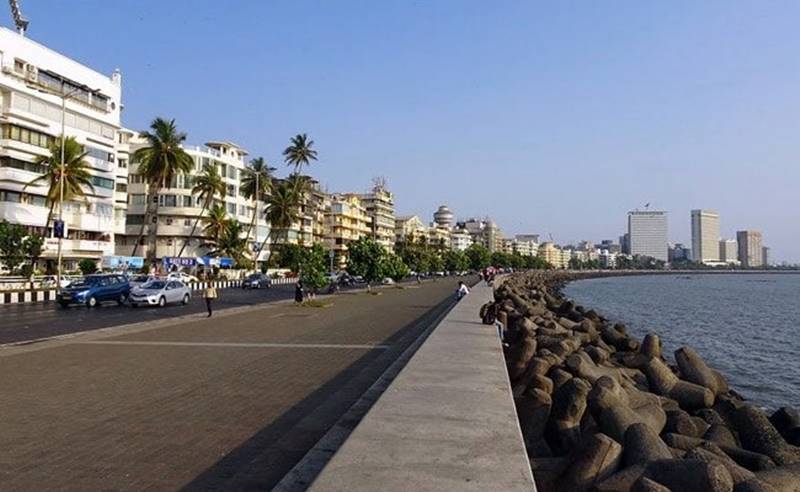The news of landslides and floods triggered due to heavy rainfall in Kerala and Uttarakhand have been making headlines recently. Extreme weather events linked to the climate crisis are unraveling every passing day in the country. In the midst of this, a recent peer-reviewed study has revealed that there has been a 66 per cent rise in built up area in less than three decades in Mumbai which has led to heat stress in the country’s financial capital.
The study titled “Urban Heat Island Dynamics in Response to Land-Use/Land-Cover Change in the Coastal City of Mumbai” has concluded that the city had witnessed a 2-degree Celsius average temperature rise across 27 years. It stated that with this pace of urbanization and landscape transformation, it is expected that the urban heat island intensity will further increase in the city.
Urban heat island effect occurs when cities replace the natural land cover with dense concentrations of pavements, buildings, and other surfaces that absorb and retain heat.
The joint study has been carried out by researchers from Faculty of Natural Sciences, Jamia Millia Islamia University in New Delhi; Osmania University in Hyderabad; and Aligarh Muslim University, Uttar Pradesh. It was published in the peer-reviewed Springer Journal of the Indian Society of Remote Sensing.
The study revealed that Mumbai has lost 81 per cent of its open land (barren spaces without any vegetation), 40 per cent green cover (forests & scrublands), and approximately 30 per cent of its water bodies (lakes, ponds, floodplains) between 1991 and 2018. In the same time period, the built-up area (areas developed upon) has risen by 66 per cent.
Between 1991 and 2018, Mumbai city’s green cover including forests (dense vegetation) and scrubland (sparse vegetation) fell from 287.76 square kilometres (sq km) to 193.35 sq km. The area of open land was reduced by more than half from 80.57 sq km in 1991 to 33.7 sq km in 2018.
This is not all. Mumbai also saw a reduction in area under water bodies from 27.19 sq km to 20.31 sq km between 1991 and 2018.
In sharp contrast, the conversion of open lands, green cover, and water bodies to buildable land almost doubled from 173.09 sq km in 1991 to 346.02 sq km in 2018.
The study was carried out using satellite imagery (USA-NASA Landsat datasets freely available) which were represented in the form of high-resolution maps and attempted to enhance urban planning and policy decisions by mitigating the urban heat island effect.
Rapid, uncontrolled urbanization is the root cause of the problem
Explaining the role of materials such as concrete used in construction, among other causes, that leads to the urban heat island effect, Atiqur Rahman, a professor with the Department of Geography at Faculty of Natural Sciences, Jamia Millia Islamia, said, “This will not only deteriorate the urban thermal environment but also increase the serious risks to health for city dwellers.”
Rahman said that the rise in heat intensity in Mumbai is linked to declining green cover which is the result of the large-scale transformation of the green cover into built-up land for the infrastructural development in the city.
Shahfahad, Senior Research Fellow at Department of Geography, Jamia Millia Islamia University and lead author of the study said, “Rapid uncontrolled urbanization over the past five to six decades attracted a large population in search of better economic opportunities which has transformed the natural land-use patterns on a large into the city’s built-up surfaces.”
“We observed that the average temperature in 1991 was 34.08 degrees Celsius. It rose to 36.28 degree Celsius in 2018 (a 2.2 degree Celsius increase) under the heat island zones (vulnerable areas) thus exposing people to higher heat risk,” Fahad said.
Possible solutions to overcome the heat stress
As per the suggestions of the author, there is an urgent need to promote urban greening at micro/wards/mohalla level and rooftop terrace gardening as well as discouraging the use of glass in the high rise buildings, etc.
“Although there are limited vacant spaces in Mumbai, the use of geospatial techniques can be effective in the identification and protection of green spaces and water bodies,” said Fahad.
According to Rahman, the increased mortality rate due to increasing urban heat island intensity has been noted in several cities in Europe and Northern America. “Therefore, there is an urgent need for decision-makers to understand the health impact that this might have on citizens, and mitigate this rising heat intensity by increasing the green cover,” the professor added.














